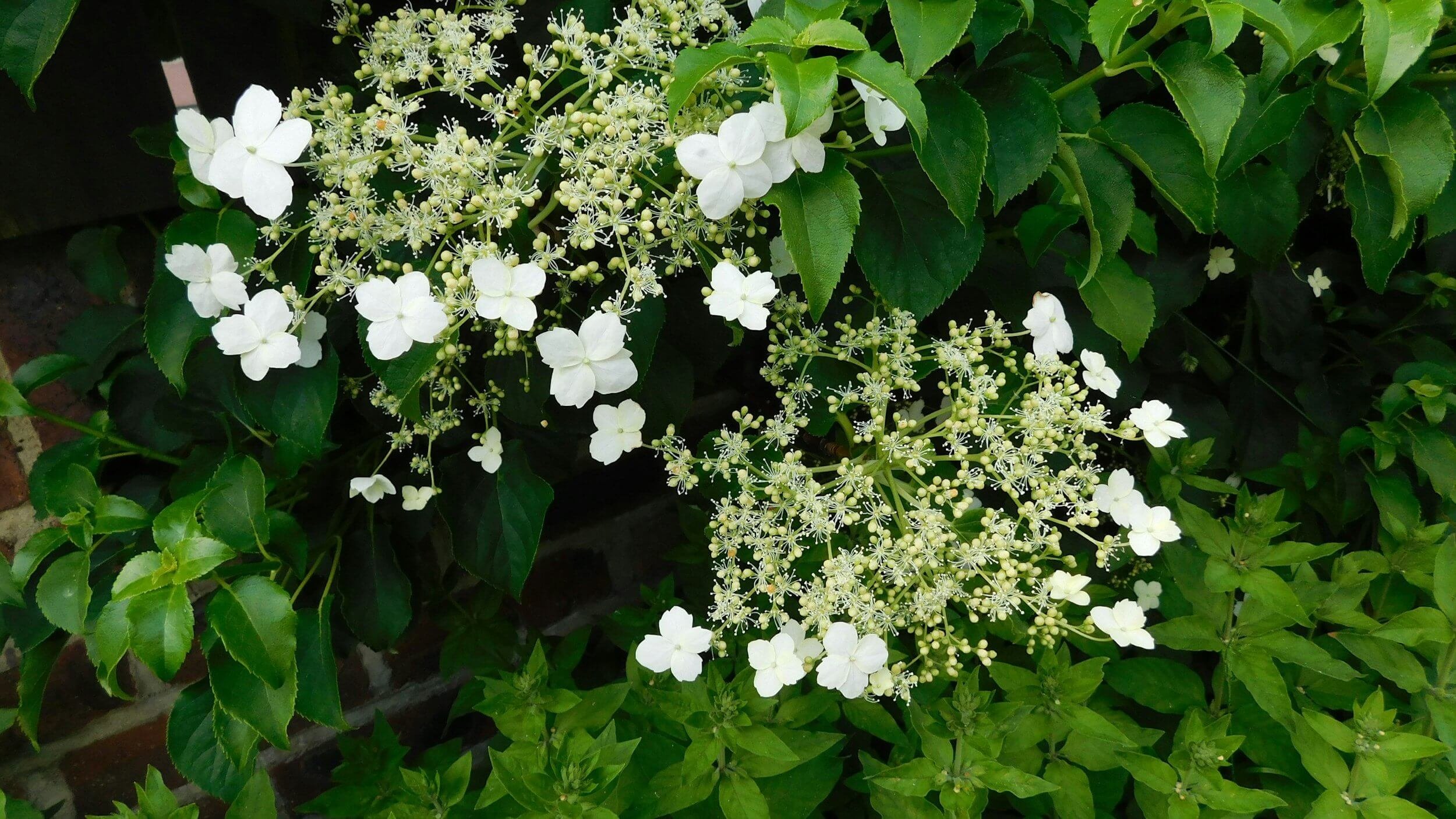Hydrangea Types Explained: Choose Wisely for Your Garden
Exploring the Different Kinds of Hydrangeas for Your Garden
Are you feeling overwhelmed by the multitude of hydrangea options available? In recent years, the hydrangea market has seen an influx of new varieties, each boasting unique characteristics and attributes.
With this surge in options, it's no wonder that gardeners may find themselves overwhelmed when trying to select the perfect hydrangea for their landscape.
This simple guide aims to provide clarity by breaking down the key differences between six popular hydrangea types. Whether you're a seasoned gardener or a novice enthusiast, this article will help you navigate through the many options available and make an informed decision for your garden.
Keep reading until the end, where we dive into when you can plant hydrangeas for best results - plus, get inspired with ideas on how to use these gorgeous blooms in your garden design.
Bigleaf Hydrangea (Hydrangea macrophylla)
An old-fashioned favorite. Also called French hydrangea, mophead, or Hortensia.
A deciduous shrub with an upright, multi-stemmed form.
Two flower types: Mopheads have large, globe-shaped flower heads, and lacecaps have flattened heads of tiny flowers surrounded by larger florets.
Native to Japan and Korea.
Grows in zones 6-9 (most can grow in zone 5 with winter protection).
Good for cut flowers.
Flower color can be changed by manipulating the soil pH - acidic soil for blue, alkaline soil for pink.
Needs some shade.
Grows 3-6 feet tall and wide; smaller cultivars available.
Not a reliable bloomer - blooms can be killed by a late frost. Reblooming cultivars aim to fix this problem.
Older cultivars bloom on old wood; newer, reblooming cultivars bloom on old and new wood.
Popular cultivars: Endless Summer® Reblooming hydrangea series, Let’s Dance™ Reblooming hydrangea series
Learn more about bigleaf hydrangeas here.
A bigleaf hydrangea with mophead flowers (Hydrangea macrophylla).
Panicle Hydrangea (Hydrangea paniculata)
The most sun, heat, and drought tolerant of all the hydrangea types.
A deciduous shrub with an upright, multi-stemmed form.
Showy blooms from summer through early fall.
Cone-shaped flower heads.
Native to China and Japan.
Grows in zones 3-8 (the popular ‘Limelight’ cultivar can grow in zones 3-9a).
Good for cut flowers.
Different cultivars available with flowers in shades of white, cream, green and pink.
Flower color unaffected by soil pH.
Likes full sun.
Fast-growing and vigorous.
Grows 6-8 feet tall and wide; smaller cultivars also available.
Blooms reliably on new wood.
Looks best with an annual pruning in late winter or early spring.
Popular cultivars: Limelight, Quick Fire®, Vanilla Strawberry™, Bobo®
Learn more about the panicle hydrangea here.
Panicle hydrangea (Hydrangea paniculata).
Oakleaf Hydrangea (Hydrangea quercifolia)
Four seasons of interest.
A deciduous shrub with an upright, irregular shape.
Showy, panicle-shaped flowers in late spring and summer.
Rich, vibrant fall leaf color in shades of red, burgundy, and purple.
Cinnamon-colored exfoliating bark provides winter interest.
Native to the Southeastern United States.
Grows in zones 5-9.
Easy to grow in full sun to partial shade.
Different cultivars available with flowers in shades of white, cream, pink, rose or green.
Flower color unaffected by soil pH.
Grows 6-8 feet tall and wide; smaller and larger cultivars available.
Blooms on old wood.
Slow to moderate growth rate.
Needs minimal pruning.
Popular cultivars: Ruby Slippers, Alice, Snow Queen
Learn more about oakleaf hydrangeas here.
Oakleaf hydrangea (Hydrangea quercifolia).
Mountain Hydrangea (Hydrangea serrata)
Reliable flower production and low maintenance requirements.
A deciduous shrub with a compact, upright form.
Blooms from early to late summer.
Lacy, flat-topped flowers in shades of blue or pink. Flowers are comprised of tiny inner florets surrounded by large outer flowers.
Native to Japan and Korea.
Grows in zones 4-9 (some cultivars are zones 5-9).
Flower color can be changed by manipulating the soil pH - acidic soil for blue, alkaline soil for pink.
Likes partial shade and cool, rich, consistently moist soil.
Does not wilt as easily as bigleaf hydrangea.
Mature size is 3-5 feet tall; some cultivars are smaller.
Blooms on old wood.
Compact shape needs very little pruning.
Very pest and disease-resistant.
Popular cultivars: Bluebird, Tiny Tuff Stuff™
Learn more about mountain hydrangeas here.
Mountain hydrangea (Hydrangea serrata).
Smooth Hydrangea (Hydrangea arborescens)
Extreme cold tolerance. Grows in zones 3-8.
A deciduous shrub with a loose, upright, suckering habit.
Flat to globe-shaped flower clusters.
Stems tend to flop over from the weight of their flower heads, especially after a heavy rain. Newer cultivars aim to fix this problem.
Blooms from late spring through summer.
Different cultivars available with white, green or pink flowers.
Flower color unaffected by soil pH.
Native to Eastern North America.
Grows 3-6 feet tall and wide; smaller cultivars available.
Fast-growing.
Likes partial sun with at least 3 hours of direct sunlight to promote the development of strong stems.
Flowers on new wood; may be pruned to the ground in late winter or early spring.
Popular cultivars: Annabelle, Incrediball®
Learn more about smooth hydrangeas here.
Incrediball® Smooth Hydrangea. Photo courtesy of Proven Winners, provenwinners.com
Climbing Hydrangea (Hydrangea anomala subspecies petiolaris)
Vigorous, deciduous vine that clings to walls, fences, and trellises with aerial roots.
Lacy, flat-topped white flowers comprised of tiny inner flowers surrounded by large outer florets.
Blooms from early to mid-summer.
Lightly fragrant flowers.
Flower color unaffected by soil pH.
Native to Japan and Korea.
Can grow 50-80 feet long, with lateral stems extending up to 3 feet away from the supporting structure.
Grows slowly for the first two years as roots become established, then begins to grow rapidly.
Hardy in zones 4-7.
Grows in full sun to shade; afternoon shade recommended in warmer climates.
Attractive peeling, exfoliating, cinnamon-colored bark brings winter interest to the garden.
Blooms on old wood and can be pruned as needed after flowering.
Popular cultivars: The straight species is the easiest to find.
Sometimes confused with the Japanese hydrangea vine (Schizophragma hydrangeiodes).
Climbing hydrangea (Hydrangea anomala subspecies petiolaris). Image credit: Catherine Kay Greenup, Unsplash.
When to Plant Hydrangeas
Hydrangeas can be planted in either spring or fall, depending on your local climate and availability. Spring planting is ideal if you want to enjoy blooms during the same season as planting, and you will also have access to the widest variety of hydrangea types at the garden center. Fall, on the other hand, offers cooler temperatures, which helps new plants establish their roots before heading into winter dormancy.
Can I Plant Hydrangeas in Spring?
Yes, spring is a great time to plant hydrangeas, especially if you want to enjoy blooms during the same growing season! As the soil warms up and the days grow longer, hydrangeas quickly get to work establishing roots and putting on new growth. With the right care, your spring-planted hydrangea will be thriving by summer and ready to show off its full flower power.
For best results, plant once the danger of frost has passed and your soil is workable. If you don’t know the average date of last frost for your area, you can look it up using NOAA’s interactive map. Be sure to keep your new hydrangea well-watered, especially during dry spells, to help it settle in and get established.
Spring is also when garden centers are fully stocked, so you'll have your pick of varieties and sizes. The downside? Prices are usually at their peak. But for plant lovers, the temptation of fresh, healthy hydrangeas in full leaf is hard to resist - don’t say I didn’t warn you! 😜
Can I Plant Hydrangeas in the Fall?
Yes, fall is an excellent time to plant hydrangeas - even if they’re not in bloom! Cooler temperatures make it easier for hydrangeas (and most other trees and shrubs) to establish strong root systems before going dormant for the winter. By the time spring rolls around, your hydrangea will be all settled in and ready to put on a beautiful floral display.
For best results, aim to get your hydrangea into the ground about six weeks before your area’s average first frost date. If you’re not sure when that is, you can look it up on the Farmer’s Almanac website. Be sure to keep the plant well-watered until it goes dormant; consistent moisture helps it take root and adapt to its new location.
Keep in mind that fall plant selection at garden centers can be limited. By this time of year, many nurseries have sold through much of their stock, and what’s left may be odds and ends. The upside? Fall is also when discounts are common, so you might score a great deal! Or several, if you are like me and can’t control yourself! 😉
Hydrangeas and Garden Design
In garden design, hydrangeas are incredibly versatile and can enhance almost any landscape style. Their bold, beautiful blooms and lush foliage make them excellent anchor plants in foundation beds, borders, or mixed shrub plantings.
Planted near a front entry or walkway, hydrangeas serve as a welcoming statement piece that draws in the eye. They add timeless, old-fashioned charm to cottage-style gardens and are especially striking in mass plantings, where their billowy form creates a soft, naturalistic feel.
In more formal landscapes, hydrangeas offer striking contrast of form and texture. Their broad leaves and large flower heads pair beautifully with the neat, fine-textured structure of plants like boxwoods.
Hydrangeas also work wonderfully when used as focal points in the landscape. A single, well-placed specimen - especially a larger variety or one with a striking flower color - can anchor a planting bed or draw attention to a particular area of the yard.
They are equally at home in woodland gardens, where their broad leaves and natural, rounded shape blend beautifully with shade-loving perennials in dappled light. Along fences, walls, or property edges, hydrangeas provide a soft, full backdrop that complements both flowering plants and evergreens.
With so many types to choose from - compact or sprawling, mophead or lacecap, sun-tolerant or shade-loving - there’s a hydrangea variety to suit nearly every garden need and design aesthetic!






